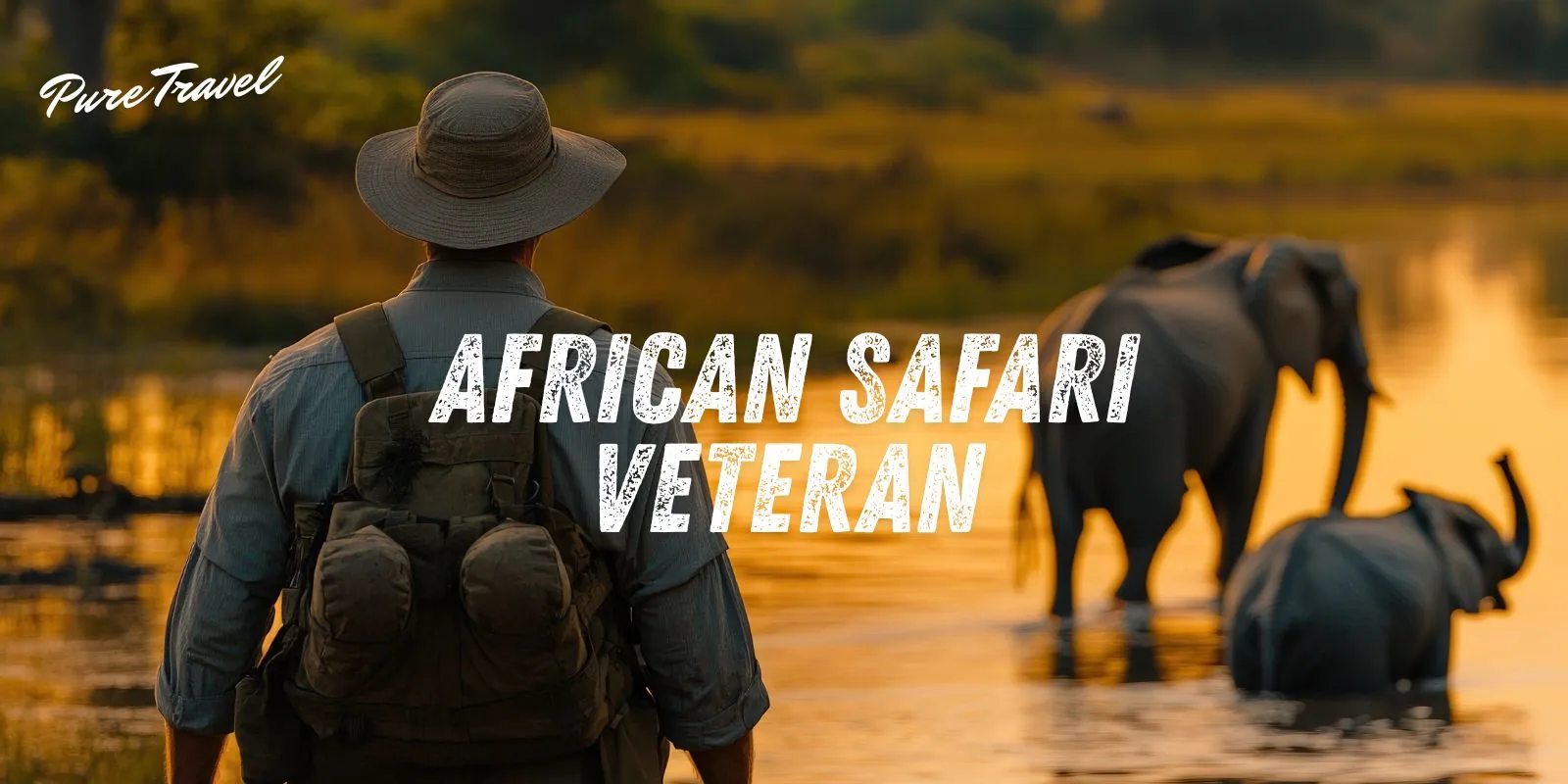African Safari Veteran: Tales From The Heart Of The Wild
Nothing compares to the thrill of an African safari. From sunrise over the Serengeti to the echoing roars of lions at dusk, every moment stirs the soul. As an African Safari veteran, I’ve learned what truly makes or breaks a journey — and it all begins with smart, soulful packing.
Introduction – Preparing for the Adventure
When it comes to exotic locales and incredible experiences, nothing beats an African safari — and the best advice comes from an African Safari veteran. Our journey through Africa’s wild heart began long before the plane took off — with packing lists, anticipation, and dreams of golden plains stretching into infinity. Each trip taught us more about balance: between excitement and preparedness, spontaneity and safety.
The thrill of an African adventure always begins in the mind — imagining herds of elephants moving through the morning mist, the low rumble of a lion somewhere beyond the acacias, and the vast, open skies that seem to breathe freedom. Yet amid all that wonder lies the quiet wisdom of preparation: knowing that every hat, lens, and notebook packed today will become part of tomorrow’s unforgettable memory. This isn’t just travel — it’s the art of being ready for the wild.
Morning: The Essential Packing Ritual
As dawn light filtered through our curtains, I laid out our safari essentials one by one. The earthy scent of canvas bags and the faint tang of sunscreen filled the room. Years of travel had refined our checklist — and these were the non-negotiables.
African Safari veteran – Outside, the early chatter of birds hinted at the adventures ahead — lilting calls of hornbills and the distant hum of a waking village. Packing had become almost meditative for us; every item told a story from safaris past. The worn leather straps of my duffel, the camera lens still dusted with Kalahari sand, the wide-brimmed hat that once shielded me during a sudden Serengeti downpour — each piece carried a memory and a lesson. It’s funny how something as simple as folding clothes can feel like preparing for a sacred ritual when the wild awaits beyond the horizon.
1. Insect Repellent
It may sound obvious, but insect repellent is your first line of defense on any African safari. Mosquitoes can turn magic into misery. We always carry a 50% DEET spray — the reliable kind that works even in humid deltas and bush camps. A small bottle costs around R120 (AUD 10), but the peace of mind? Priceless.
2. Cameras
Our camera is our third travel companion. The smell of dust, the glint of a lion’s eye, the shimmer of dawn on an elephant’s tusk — all demand to be captured. Alongside our DSLR, we pack a disposable backup camera (R90, AUD 7) because sometimes the best shots come when you least expect them.
3. Passport & Money Holder
In Africa, keeping your essentials close is vital. We use a slim travel wallet that sits under our clothes — holding passports, cash, and permits. It’s a simple habit that’s saved us from panic more than once. Always carry photocopies separately in case of emergencies.
Afternoon: Comfort in the Wild – African Safari veteran
The African sun is unforgiving, yet glorious. Wide-brimmed hats, breathable shirts, and hair ties become your best friends. A hat not only shades you from the heat but completes the safari silhouette you’ve dreamed of. Don’t underestimate the dust — it has a way of finding its way into everything, including your hair!
African Safari veteran – By midday, the landscape shimmered beneath the heat haze — golden grasses swaying like waves under a pale blue sky. Every breeze carried the scent of dry earth and wild sage. Our jeep rattled along red dirt tracks, and with each bump, a little more of Africa seemed to cling to us — a film of dust, a touch of sun, a sense of belonging.
4. Hats & Hair Ties
A good hat (R150, AUD 12) and a few sturdy ties make a world of difference. The wind on an open-top jeep can turn your hair into a wild mane, but with a little preparation, you’ll stay cool and photo-ready.
5. Bottled Water
Hydration is key. Even in the cooler mornings, the African air is dry. We always carry at least two 1L bottles of clean water each. It’s a small detail that ensures you stay alert and energized. A bottle costs roughly R15 (AUD 1.30), and you’ll find refill stations at most lodges.
6. Sunscreen
Sunscreen is your silent shield. Choose a brand that’s sweat- and water-resistant (SPF 50+). Apply generously — the African sun is stronger than it seems, especially in high-altitude parks like Serengeti or Kruger. A 100ml tube (R160, AUD 13) will easily last two weeks.
Evening Reflections: Capturing the Journey – African Safari veteran
As the sun dipped low, painting the plains in amber, I opened my worn leather notebook. Every safari tells a different story — a lion sighting here, a zebra herd there — and each deserves to be remembered. Journaling keeps those moments alive long after you’ve left the savannah behind.
African Safari veteran – The air grew cooler, carrying the faint scent of woodsmoke and wild basil from nearby campfires. Somewhere in the distance, a hyena laughed — that unmistakable cackle that seems both eerie and alive. I sipped from a tin mug of rooibos tea, its earthy sweetness grounding me in the moment. The page before me filled with notes of the day: the softness of the sunrise, the rhythmic sway of the jeep, the quiet awe of watching a herd of elephants cross the river in perfect silence.
7. Journal or Notebook
A simple notebook (R80, AUD 6) can be your most precious souvenir. Between sketches, scribbles, and smudges of red dust, it becomes a personal archive of Africa’s soul.
8. Ready-to-Eat Snacks
We never leave without beef jerky, trail mix, and granola bars. They’ve saved us countless times on long game drives. Snack packs cost around R50 (AUD 4) and can be easily found in city supermarkets before you head out. When you’re hours from camp, they’re gold.
Pro Traveler Tip
Pack light but smart: Neutral-coloured clothing (khaki, olive, beige) helps you blend into the bush and avoid attracting insects. Avoid bright colours or white — they stand out and can disturb wildlife.
Pro Traveler Warning
Don’t rely solely on your lodge for essentials: Once you’re deep in the park, small items like sunscreen, batteries, or bug spray can cost double — if available at all. Stock up before you leave the city.
Redefining Preparedness: Your Journey Into the Wild
Every safari teaches you something new — not just about wildlife, but about yourself. From the thrill of the first lion sighting to the quiet awe of starlit nights, Africa rewards those who come prepared and open-hearted. So pack wisely, travel deeply, and let the wild teach you how to listen.
FAQ: African Safari Veteran
1. What are the must-pack essentials for an African safari?
Key safari essentials include insect repellent (50% DEET), sunscreen (SPF 50+), wide-brimmed hats, a refillable water bottle, neutral-colored clothing, binoculars, and a quality camera. Don’t forget a journal for capturing memories and photocopies of travel documents.
2. What colors should I wear on safari?
Wear neutral tones like khaki, olive, and beige. These colors blend with the natural environment, reduce heat absorption, and help avoid attracting insects. Avoid white (dust shows easily) and bright colors, which may disturb wildlife.
3. How do I protect myself from insects during safari?
Apply insect repellent regularly, especially during early morning and evening drives. Wear long sleeves and pants in light fabrics, and consider treating clothing with permethrin. Sleeping under treated mosquito nets is essential in high-risk areas.
4. What camera gear is best for safari photography?
A DSLR or mirrorless camera with a telephoto lens (200–400mm) is ideal for capturing wildlife from a distance. Carry extra batteries, memory cards, and a dustproof bag. A disposable or backup compact camera can also be handy for spontaneous moments.
5. How can I stay comfortable during long game drives?
Dress in layers for changing temperatures, carry bottled water, and pack light snacks like trail mix or jerky. Use a travel pillow for comfort, and wear breathable fabrics to manage the heat. Hydration and shade protection are key to an enjoyable safari day.







